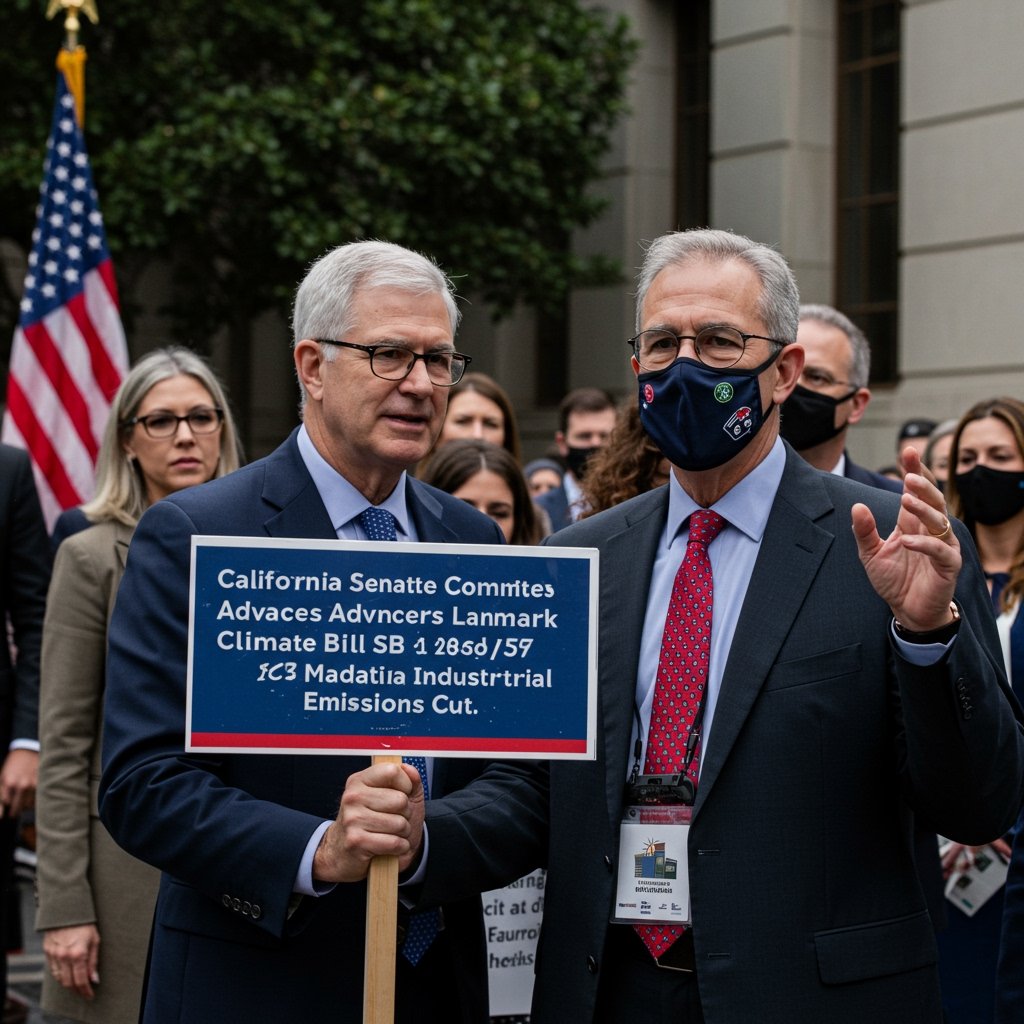Sacramento, CA – A pivotal piece of California’s ambitious climate change agenda, State Senate Bill 123, successfully cleared a significant legislative hurdle today, passing the Senate Environmental Quality Committee on a 7-3 vote. The bill, championed by Senator Maria Rodriguez (D-Los Angeles), targets a sweeping 50% reduction in industrial greenhouse gas emissions by 2035, setting a stringent new standard for key sectors within the state.
Background and Bill Objective
California has long positioned itself as a leader in climate action, establishing aggressive targets for emissions reductions and renewable energy adoption. SB 123 emerges within this context, specifically addressing the industrial sector – a significant contributor to the state’s overall greenhouse gas footprint. The bill’s core mandate is clear: require industrial facilities to slash their emissions by half over the next decade, a measure proponents argue is essential for the state to meet its broader climate goals and transition to a sustainable, low-carbon economy. Senator Rodriguez framed the bill as a necessary step to accelerate the pace of emissions reductions in a sector historically challenging to decarbonize, emphasizing the urgency dictated by climate science.
Committee Hearing and Deliberation
The Senate Environmental Quality Committee hearing was marked by robust debate, reflecting the bill’s potentially transformative impact. Testimony was heard from a diverse range of stakeholders, presenting starkly different perspectives on the bill’s feasibility and consequences. Committee members posed pointed questions regarding implementation challenges, technological readiness, and economic implications.
Industry Opposition and Concerns
Opposition to SB 123 was vocal and primarily led by industry groups, most notably the California Manufacturers Association. Representatives from the association and individual companies expressed grave concerns about the bill’s stringent timeline and ambitious reduction targets. Their arguments centered on potential adverse economic impacts, including significant compliance costs for manufacturers, which could lead to reduced competitiveness, factory closures, and ultimately, job losses across the state. Industry spokespersons testified that the required technological upgrades and operational changes needed to achieve a 50% reduction in just over ten years might be prohibitively expensive or not yet commercially viable at scale for many facilities. They argued that the bill could place California businesses at a disadvantage compared to those in other states or countries with less stringent regulations, potentially driving manufacturing out of the state – a phenomenon often referred to as ‘carbon leakage’. They advocated for a more gradual approach, greater flexibility in compliance methods, and more state support for technological transitions.
Environmental and Public Health Support
In contrast, a coalition of environmental organizations and public health advocates strongly supported the bill. Groups like the Sierra Club and various environmental justice advocates lauded the committee’s vote as a critical step towards achieving California’s statutory climate goals and improving public health outcomes. Supporters highlighted the direct link between industrial emissions and air quality issues, particularly in communities located near industrial zones, which are often low-income areas and communities of color. They argued that reducing industrial emissions would lead to cleaner air, fewer respiratory illnesses, and reduced healthcare costs. Furthermore, proponents contended that while challenging, the targets set by SB 123 are achievable with existing or near-term technologies and would stimulate investment in green innovation and create new jobs in clean energy and decarbonization industries. They argued that the long-term economic benefits of avoiding the worst impacts of climate change far outweigh the costs of transitioning industrial processes. Environmental justice advocates specifically underscored the importance of the bill in addressing historical environmental inequities by cleaning up pollution sources disproportionately affecting vulnerable populations.
Sponsor’s Rationale and Committee Outcome
Senator Maria Rodriguez reiterated that the bill was carefully crafted to push industries towards necessary innovation while providing a clear, albeit challenging, roadmap for emissions reduction. She emphasized that inaction on climate change poses a far greater long-term economic and social risk. The 7-3 vote in the Senate Environmental Quality Committee reflects a majority consensus among the committee members on the necessity of taking aggressive action, despite the acknowledged challenges and industry concerns presented during the hearing.
What’s Next
With the Senate Environmental Quality Committee’s approval, SB 123 now advances to the full Senate floor for further consideration and debate later this month. Its passage through this initial committee is a significant milestone, indicating the bill’s viability within the legislative process. However, the journey through the full Senate and potentially the State Assembly is expected to be contentious. Industry groups are anticipated to continue their lobbying efforts, advocating for amendments or the bill’s defeat, while environmental and public health advocates will press for its swift passage without weakening amendments. The upcoming floor debate will be a crucial test of the bill’s support among the broader Senate body and will likely involve further discussion on its economic implications, implementation strategies, and potential amendments to address some of the concerns raised during the committee phase. The outcome will have profound implications for California’s industrial sector and its trajectory toward its climate targets.








